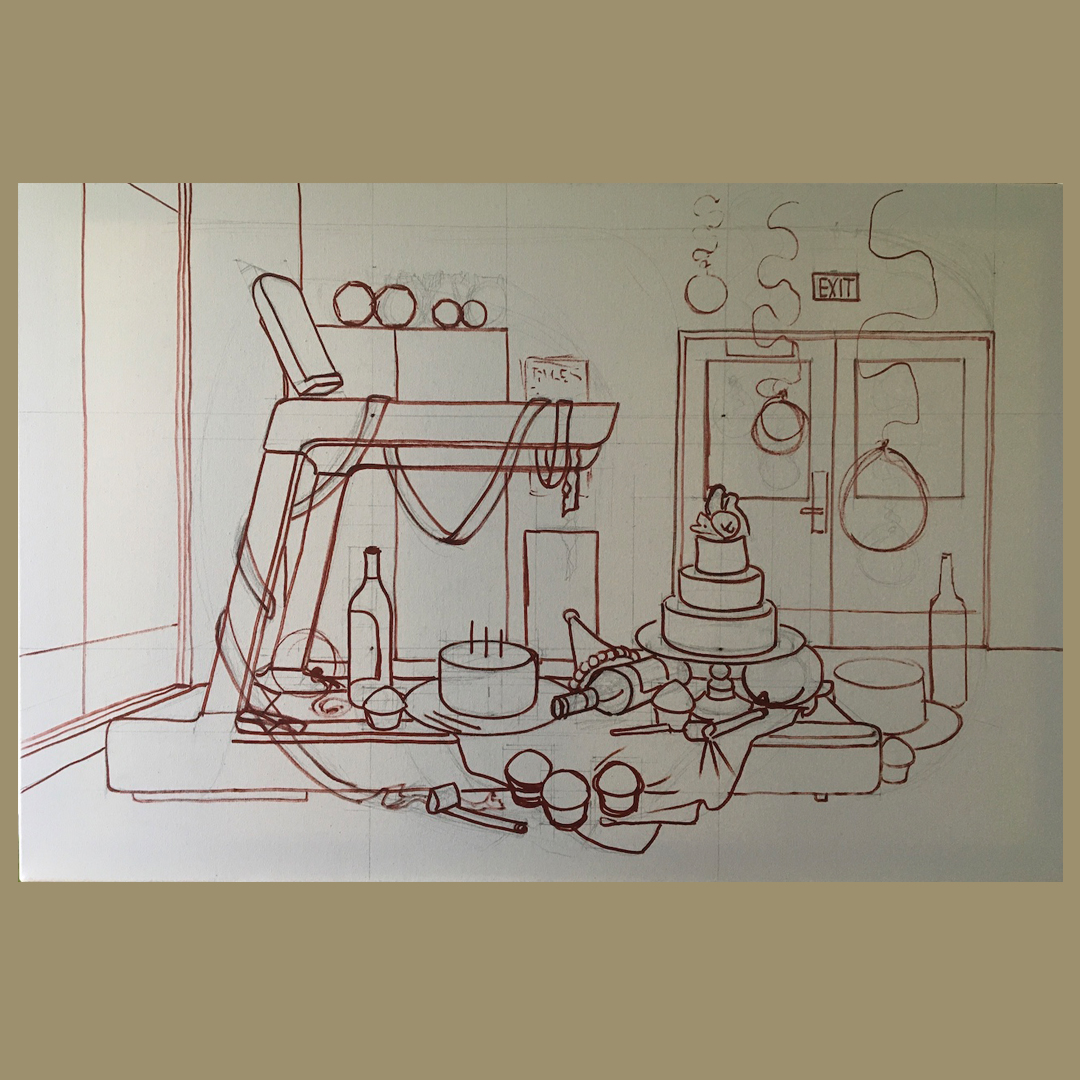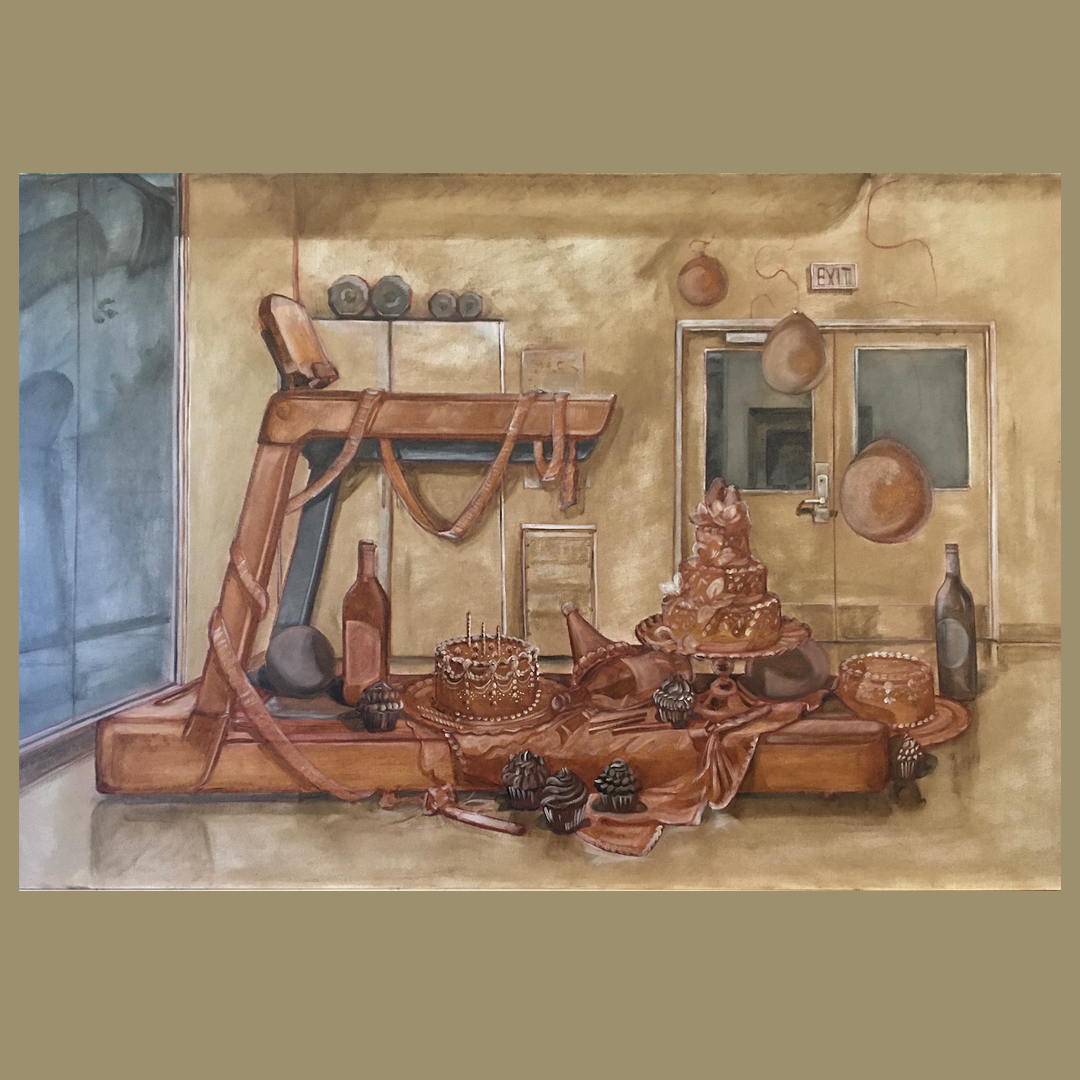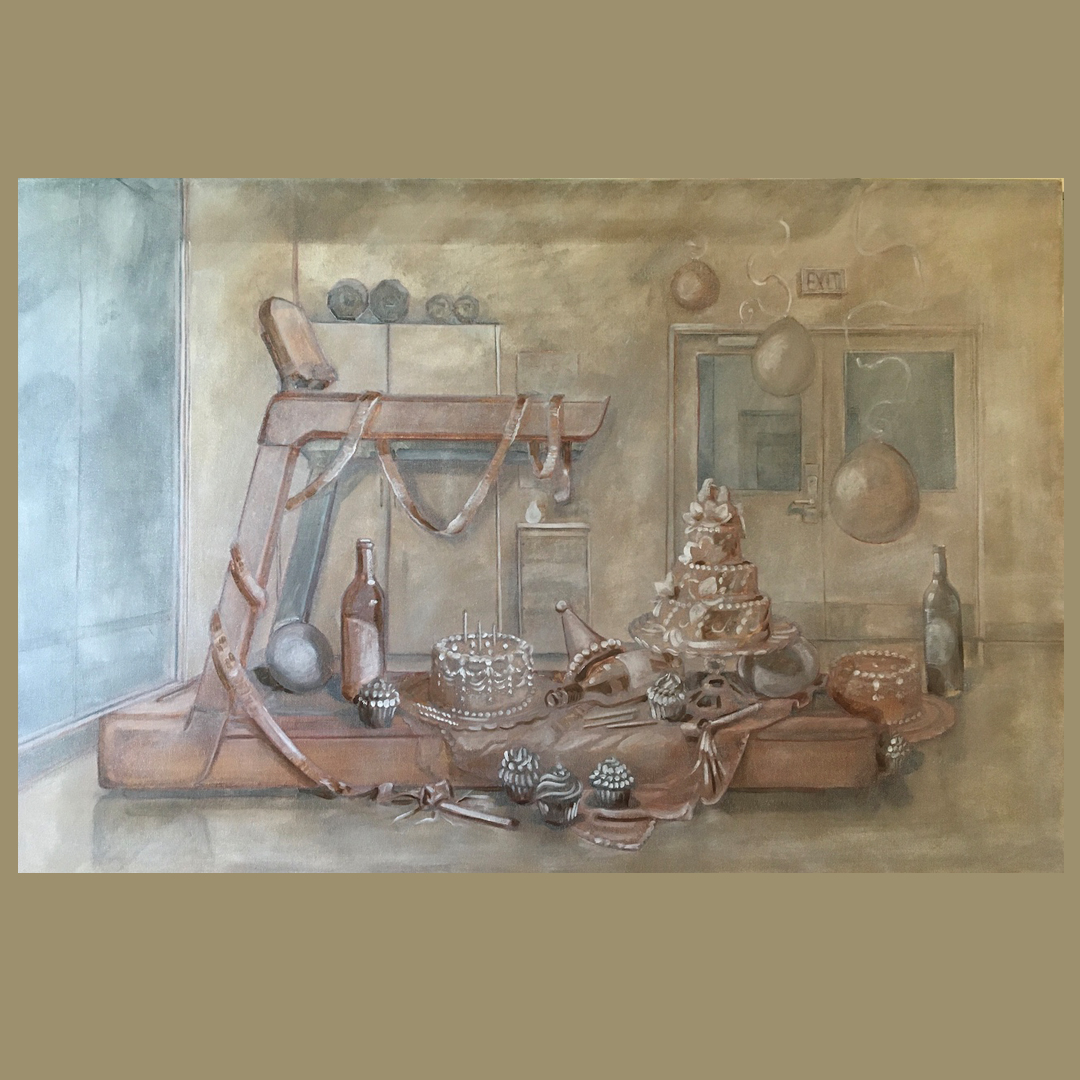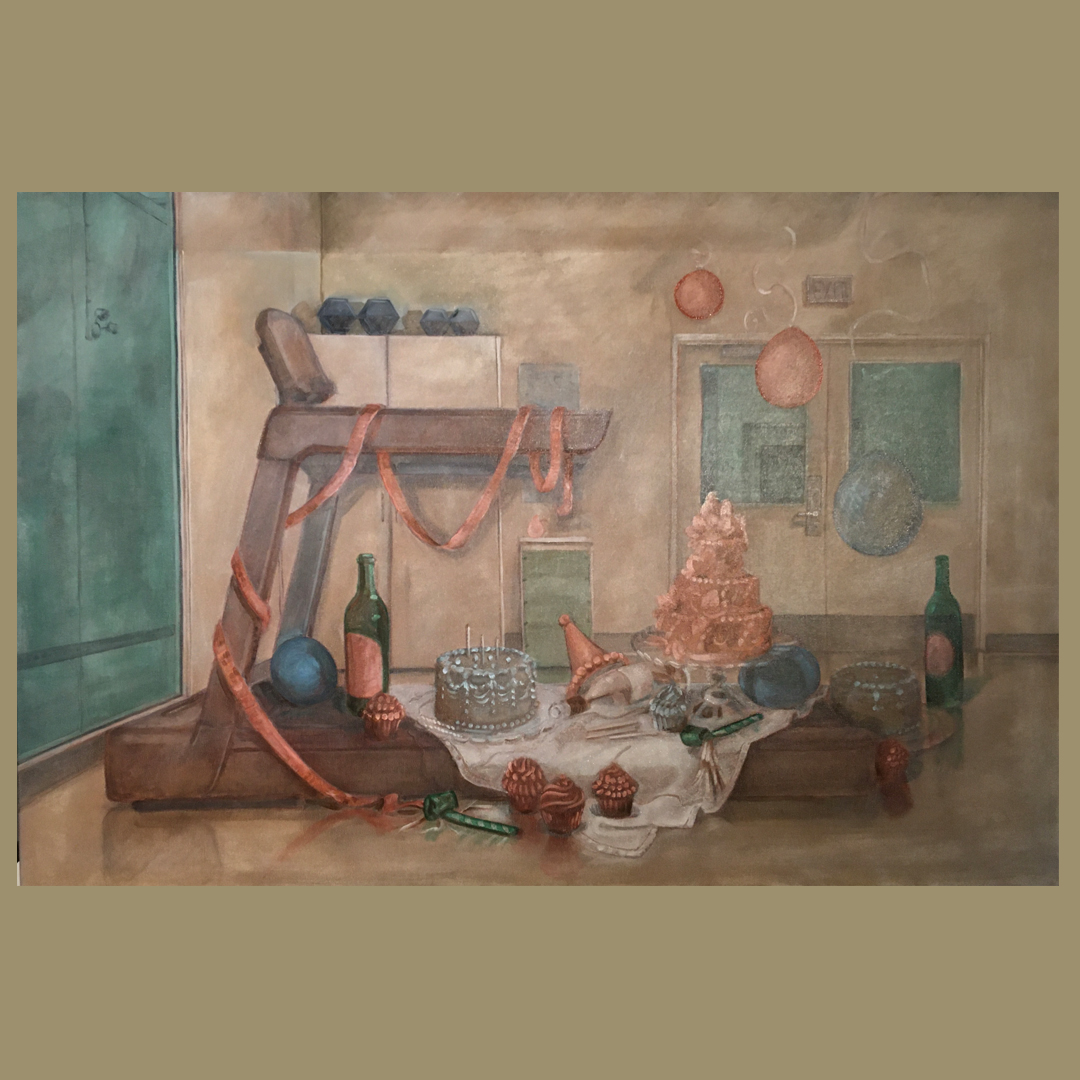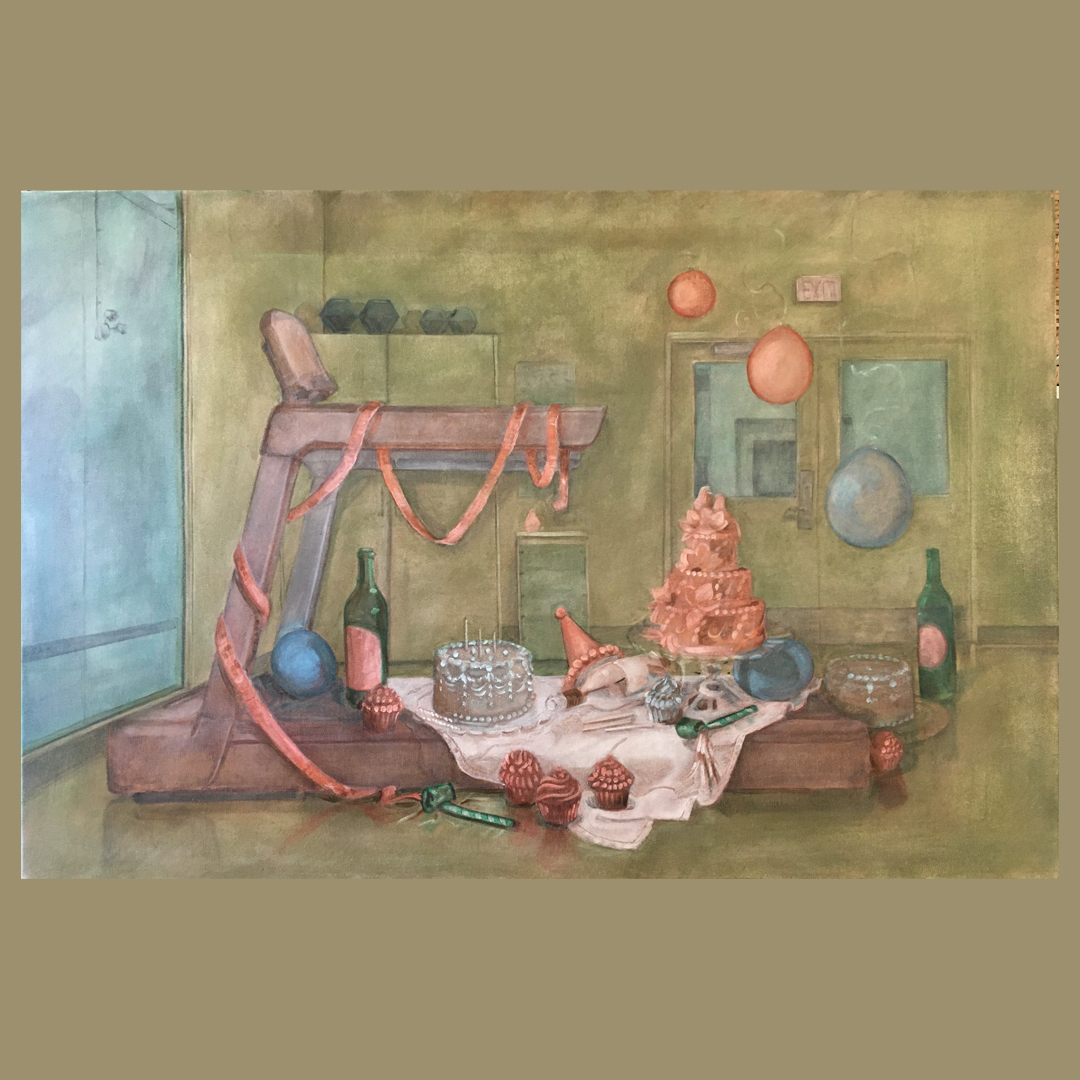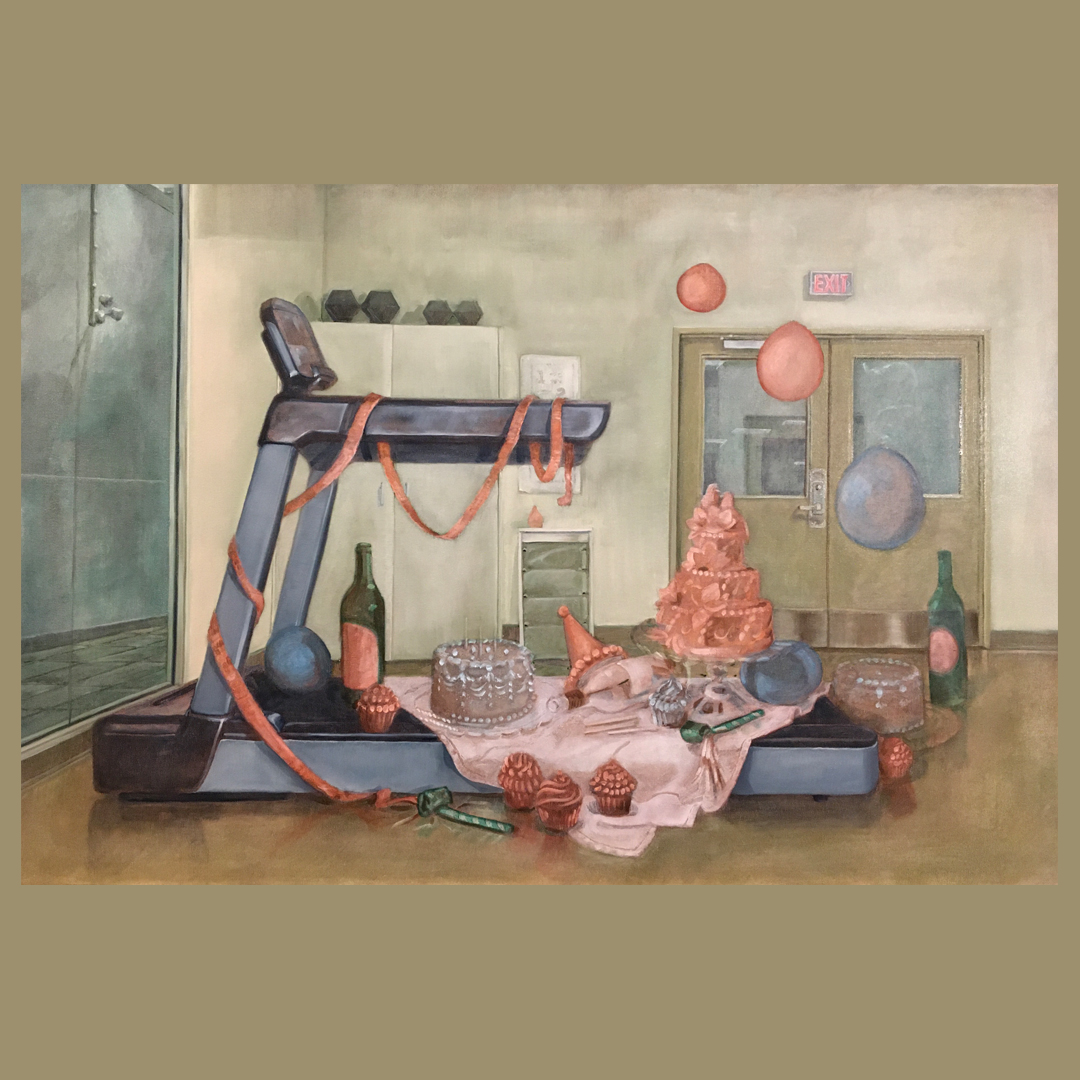
Welcome to the third instalment of a series of blog posts going in-depth into the thoughts and ideas behind each of the paintings in the Earthly Delights series. The first is here. The series is based on my experience navigating health and diet culture as a long term participant. You can read the full background by following the link to that blog post below:
Project Background: You can read more about the project background here.
The banquet piece of party food in The Social Circuit was situated in the weight and cardio room at a local public fitness and aquatic centre in Calgary. However, The Social Circuit is not about the struggle to lose weight and get in shape. Although many who are attempting this will identify with the image, it is actually about that point when the weight loss has been achieved, the struggle is supposed to be over and congratulations are due. But happily ever after never quite seems to arrive.
The Social Circuit is also about the slow and unrecognized slide into eating disorders. Unrecognized in part because it seems logical and necessary behaviour at the time, if one wants to retain the reward of their efforts (a regular pant size, social approval, good health, eternal life…). However, these behaviours are so pervasive in western society that we don’t typically recognize them as disordered unless accompanied by a Body Mass Index in the underweight category. I deliberately ‘stopped’ losing weight when I got down to a ‘normal’ BMI, to avoid the dangers of becoming anorexic, or so I thought.
Some behavioural symptoms of anorexia include fear of gaining weight, skipping meals, not wanting to eat in public, a preoccupation with food, binge eating accompanied by bulimia (self induced vomiting, but also over-exercise and/or laxative abuse) and social withdrawal:
Going out to celebrate a birthday involves a host of dangers: turning down a slice of cake that I reallllly do want to eat, or conversely suffering the judgements about if I should be eating the cake (if anyone thinks I need to watch my weight, such is our culture), or being hungry but not having foods there on my safe list (orthorexia). Maybe I will not eat all day to save up calories for the event (skipping meals)? But then maybe the gathering will trigger a binge (as the body, which thinks it is starving, fights me for control). If there is alcohol consumed that can introduce a whole other level of issues around binging and bulimia. Outside that, the price of joining in the celebration could be hours of repetitive exercise (exercise bulimia) to burn off an afternoon’s indulgence.
The fear of social eating seems justified since the body’s response to the end of caloric restriction seems to be to hold on to as many added calories and as much water as it can. This can result in sudden and dramatic overnight weight gains that may have taken months to take off in the first place. Logically speaking, it’s unlikely there are enough calories in one indulgence to warrant the weight gain, given our understanding that 3700 calories = 1 pound (for reference, that indulgence would be like eating a dozen doughnuts at once, not something I’ve ever done). But logic can’t stand up to the scale, and off to the gym I go for atonement. About the time the last pound has come back off it is time for the next celebration.
Given that having friends and a family means an annual cycle of birthdays and other celebrations, there seem to be only two equally insane options, exit your health or exit your social circle. Of course, if we could separate the concept of health from diet culture, if we could recognize that the behaviours required to maintain a tight control of body weight are symptomatic of disordered eating, the right choice might be easier to make.
My point is not that I developed anorexia (although I recognize many of the physical, mental and emotional symptoms), but that many of us, myself included, may be much closer to developing anorexia than we should be comfortable with.

